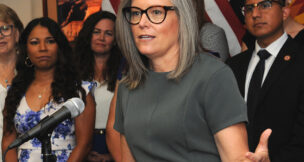Legislative candidate diagnosed with COVID-19 faces challenges
Julia Shumway//April 16, 2020//[read_meter]
Legislative candidate diagnosed with COVID-19 faces challenges
Julia Shumway//April 16, 2020//[read_meter]
Linda Patterson Campaigning in the COVID-19 era has been hard enough for politicians who build their careers on face-to-face interactions. But campaigning with COVID-19 is even...
No tags for this post.

















